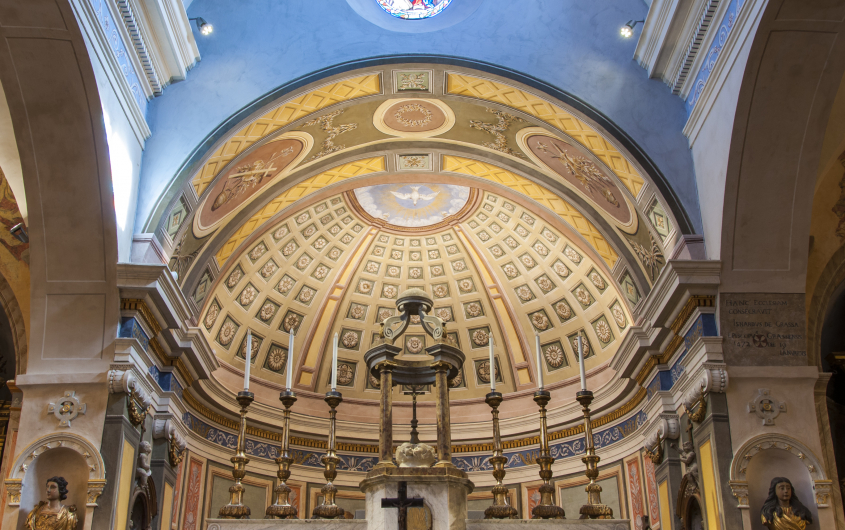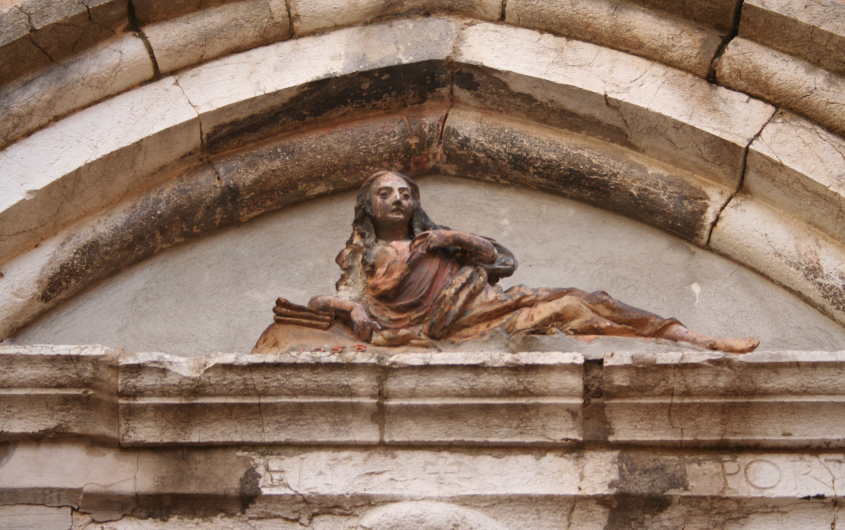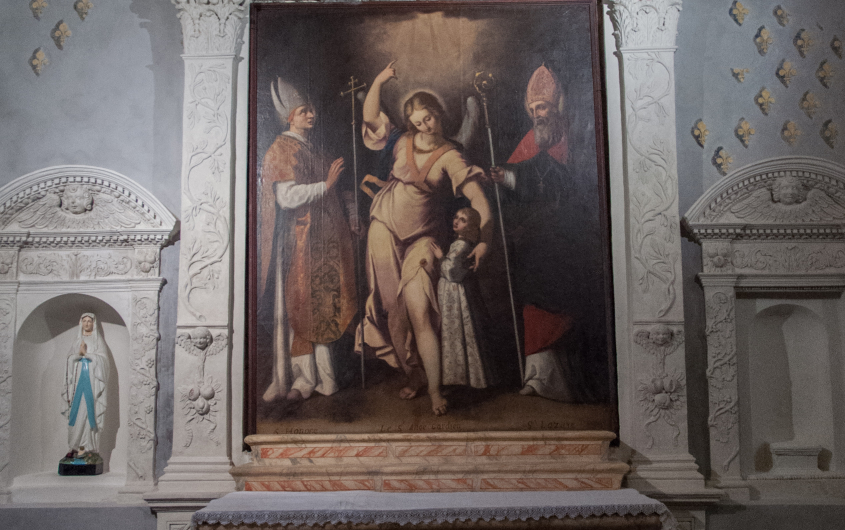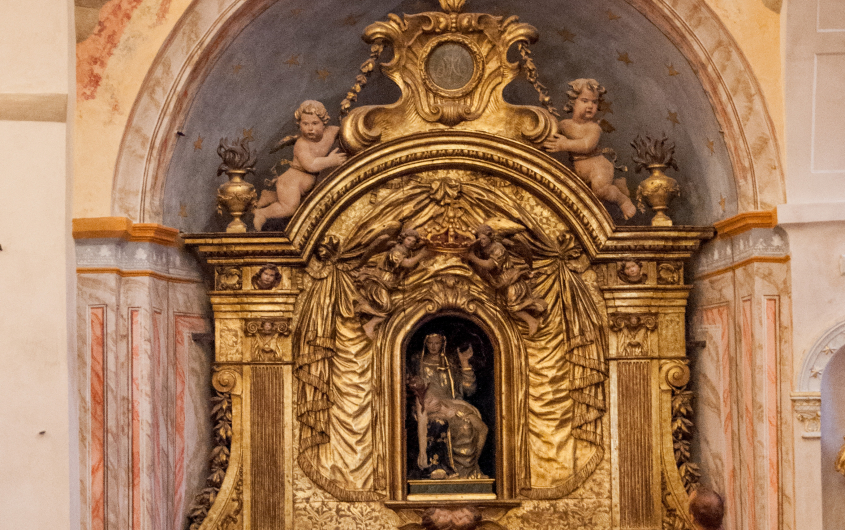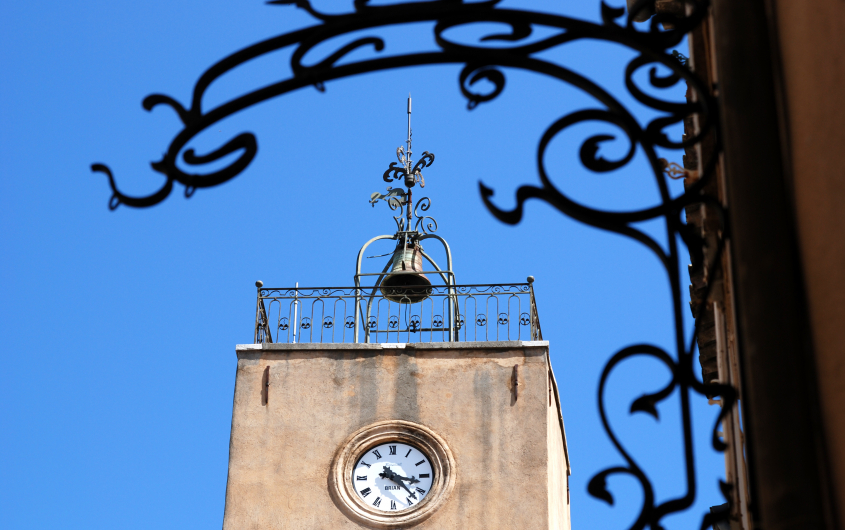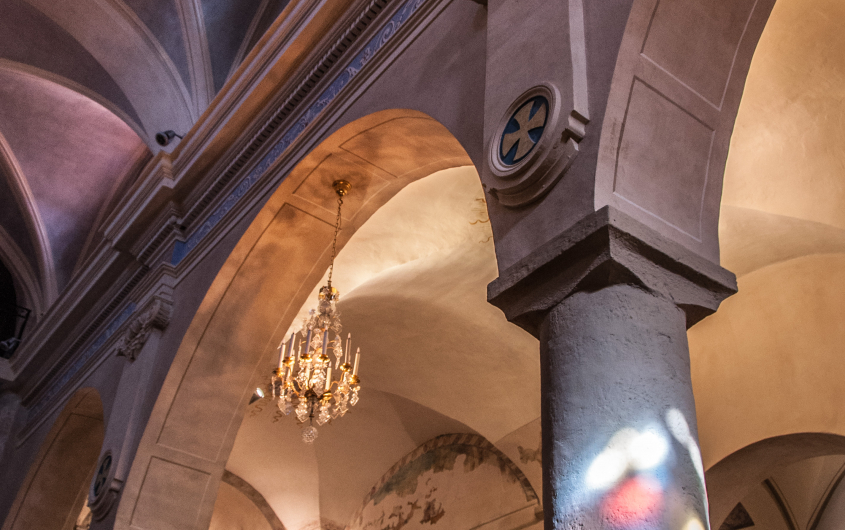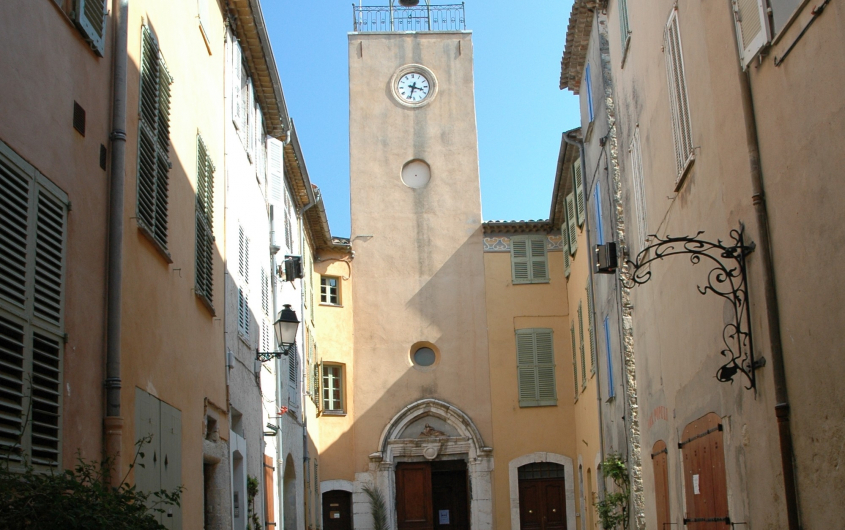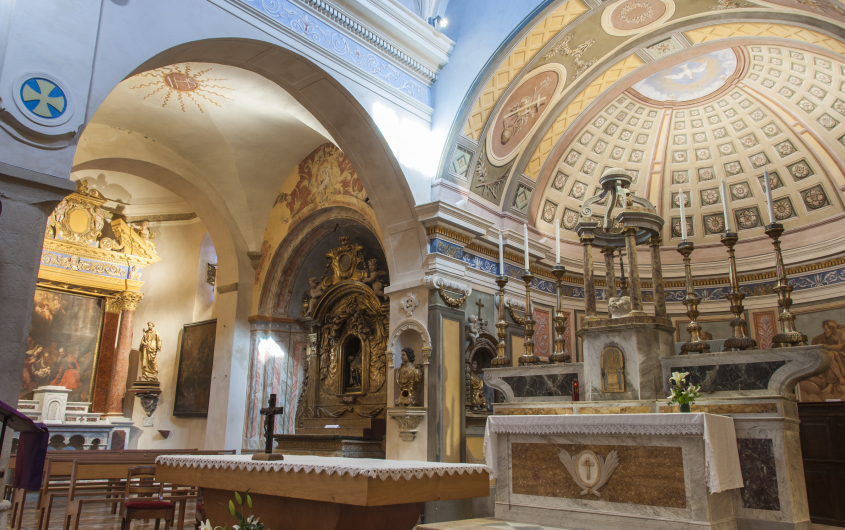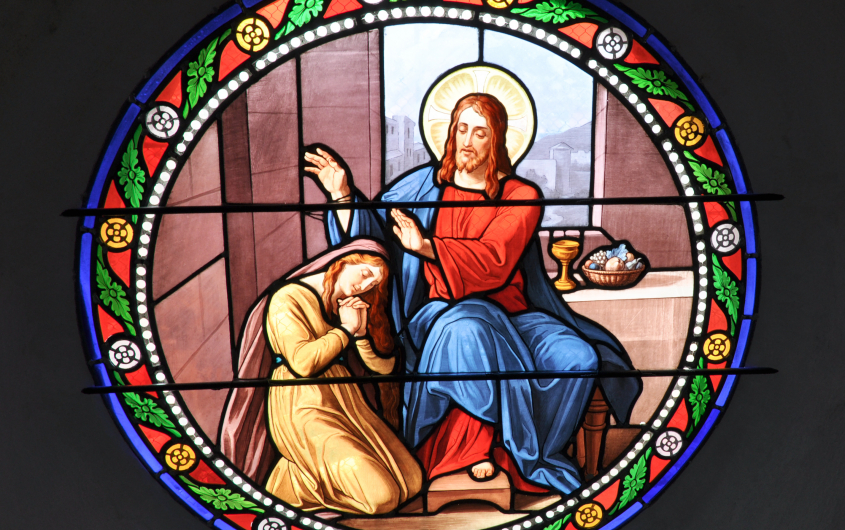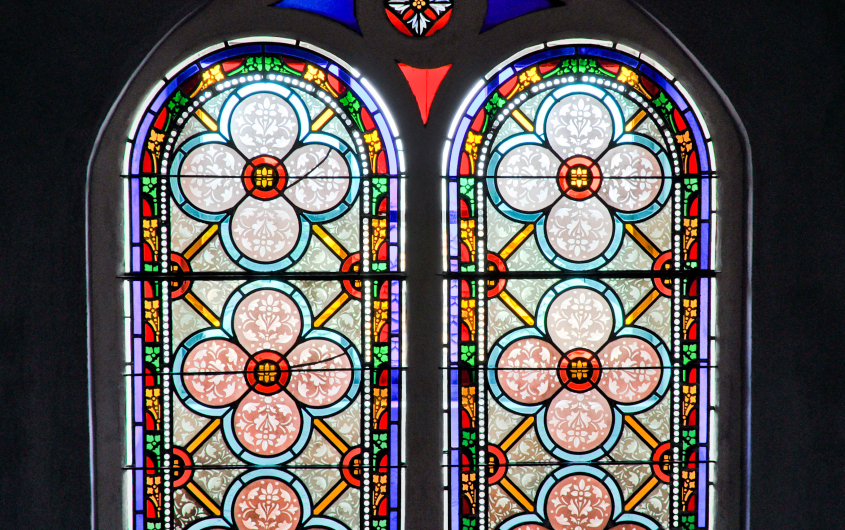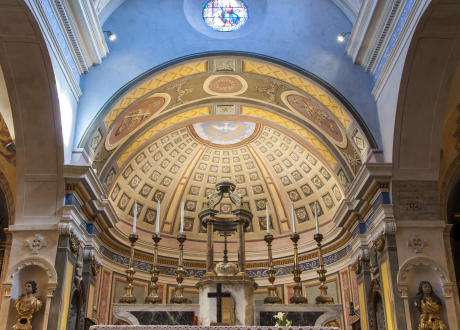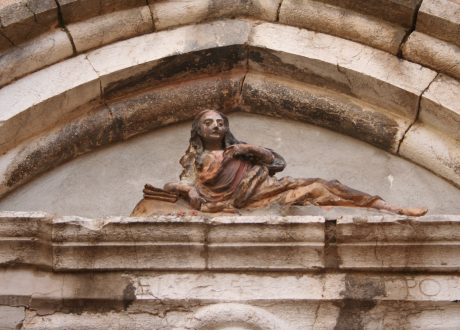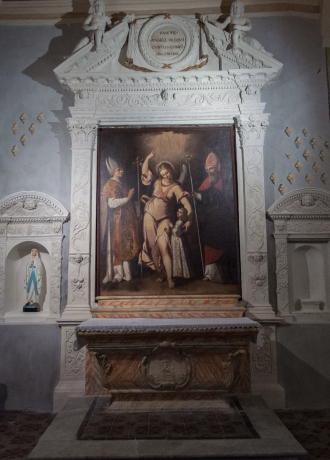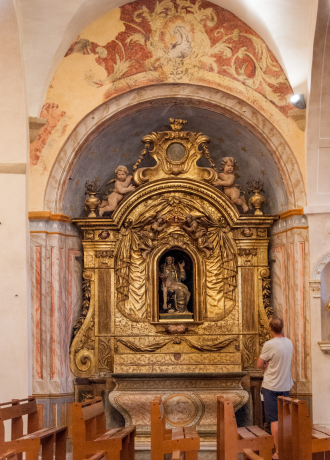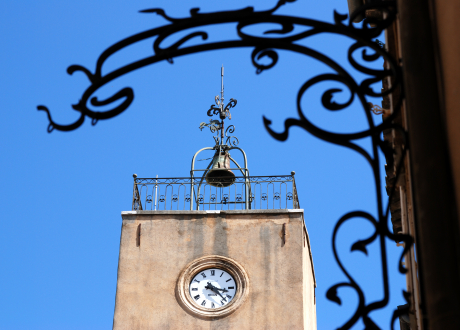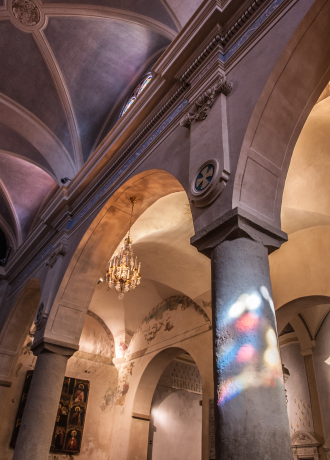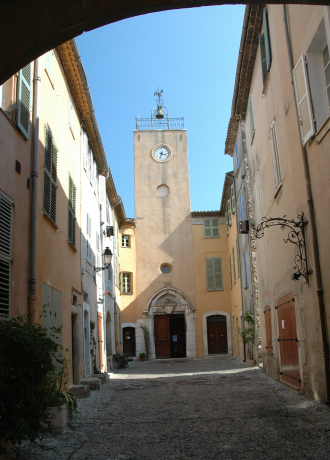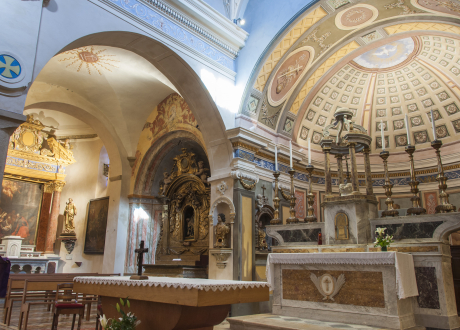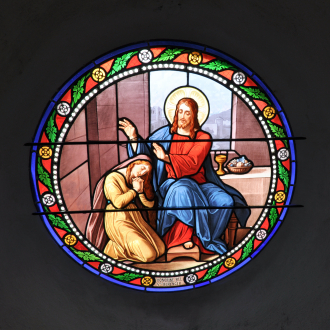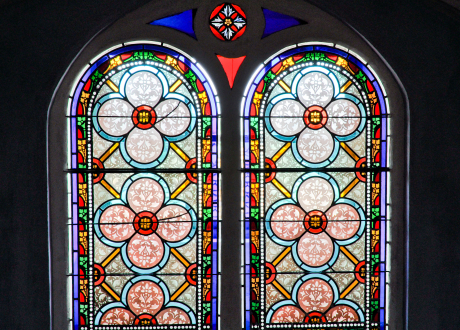The construction was not completed until 1535, when the 2nd door became the main entrance. The name of the architect, Tadeus Niger, is engraved on a block above the side door. The main door is surmounted by a statue of St. Marie-Madeleine (St. Mary Magdalen) made of terracotta (1638).
At the bottom of the staircase on the left is a magnificent altarpiece 'The Virgin with the Rosary', from the early 16th century, attributed to Louis BREA (1450-1523), leader of the school known as "Primitifs Niçois". Painted between 1500 and 1510, this altarpiece represents a Virgin of Mercy opening the sides of her coat to protect humanity, mainly from the plague. The Virgin carries the Infant Jesus on her left arm and both hold a rosary in their hand. Under the protective mantle, to the right of the Virgin are the church people, from the Pope to the most humble religious, and on his left stand the laity, from the Emperor to the simple people. All around the Gothic gilded wooden frame, Saints are represented (St Jean-Baptiste, St Etienne, St Pierre, St Barthélémy, St Julien, patron saint of the village, St. Marie-Madeleine, to which the church was dedicated). Beautiful gilt wood carvings frame the altars of Sainte Marie-Madeleine and Our Lady of the Seven Sorrows.
A Roman inscription fragment is embedded in the wall to the left of the altar. It is thanks to a Roman stele found in 1932, exhibited at the Museum of Biot, that a plausible hypothesis of the origin of the name of Biot is made. It could come from the name of a Celtic deity, God Bugio. Many remains of this period are visible in Biot, like the monument la Chèvre d’Or (the Golden Goat).
In front of the church and on a large part of the Arcades Square, a particular technique named 'calade' was implemented. The word "calade", which also refers to a steep alley, is of Provencal origin and means 'pebble'. It serves to name this primitive mosaic formed of flat pebbles placed on the edge, a process that probably originates in Italy. Picked on the nearby beach, the pebbles were carefully selected in order of size and depending on the desired color effect, from gray to red, through all the intermediate shades.
On the front of the church, the pavement is made of polychrome pebbles drawing two Maltese crosses, the date of 1685 and a beautiful rosette with a fleur-de-lis. The Maltese cross, contained in the arms of Biot, is linked to the hospital order of Saint John of Jerusalem of which it was the emblem. Hospitallers of Saint John of Jerusalem, became in 1530 Knights of Malta, are co-lords of Biot and share their rights with Bishop of Grasse until the revolution. From 1995 to 1998, the church was the object a complete restoration of the roof and its facades.

